 EDITOR'S PICK
EDITOR'S PICK
It Looks Like Honda's First EV Motorcycle Is Finally Ready, and It'll Drop Soon
06 Aug 2025 | Synopsis
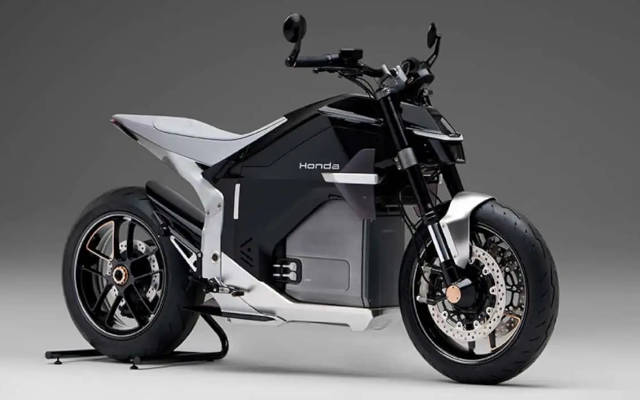 Honda is set to unveil its first performance-focused electric motorcycle on September 2, 2025, likely based on its EV Fun Concept seen at EICMA. A teaser video shows a masked prototype with refinements like a rectangular TFT display, single-sided swingarm, and sportbike ergonomics. While Honda hasn't confirmed if it's production-ready, the model is expected to launch later in 2025 as a mid‑size electric sportbike.
Honda is set to unveil its first performance-focused electric motorcycle on September 2, 2025, likely based on its EV Fun Concept seen at EICMA. A teaser video shows a masked prototype with refinements like a rectangular TFT display, single-sided swingarm, and sportbike ergonomics. While Honda hasn't confirmed if it's production-ready, the model is expected to launch later in 2025 as a mid‑size electric sportbike.Act of Resistence: The Time Is Right to Switch to an Electric Vehicle
06 Aug 2025 | Synopsis
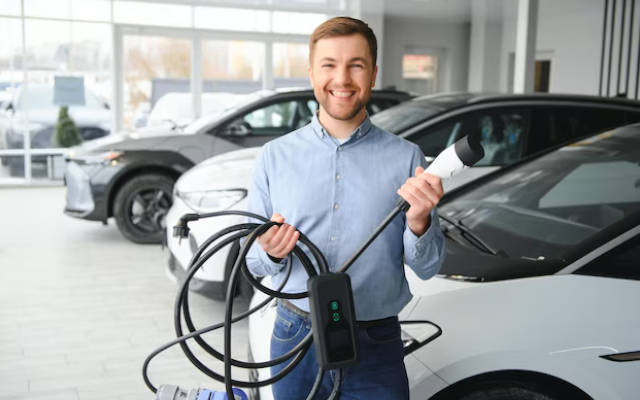 Congress has shortened the federal EV tax credit window: new vehicle buyers can receive up to $7,500 before the program expires on September 30, 2025, with used EVs eligible for up to $4,000. Additional incentives - including California's Driving Clean Assistance program offering up to $12,000 - can often be stacked to lower costs further. Local agencies like the Community Environmental Council provide personalized support to help residents navigate EV purchase programs."
Congress has shortened the federal EV tax credit window: new vehicle buyers can receive up to $7,500 before the program expires on September 30, 2025, with used EVs eligible for up to $4,000. Additional incentives - including California's Driving Clean Assistance program offering up to $12,000 - can often be stacked to lower costs further. Local agencies like the Community Environmental Council provide personalized support to help residents navigate EV purchase programs."The Kia EV4 Ran For 6,200 Miles At The Nurburgring. Its Battery Wouldn't Die
06 Aug 2025 | Synopsis
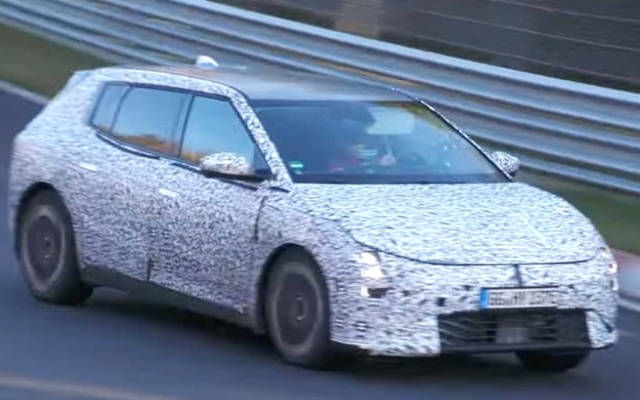 Kia subjected the EV4 to a grueling 6,200‑mile battery stress test at Nurburgring - flooring it repeatedly and using fast charging - and found its battery retained 95% health, equivalent to over 160,000 miles of "real‑world" driving. Overall testing exceeded 74,000 miles, demonstrating exceptional battery resilience. Kia also backs the EV4 with a warranty guaranteeing at least 70% capacity after 100,000 miles or eight years.
Kia subjected the EV4 to a grueling 6,200‑mile battery stress test at Nurburgring - flooring it repeatedly and using fast charging - and found its battery retained 95% health, equivalent to over 160,000 miles of "real‑world" driving. Overall testing exceeded 74,000 miles, demonstrating exceptional battery resilience. Kia also backs the EV4 with a warranty guaranteeing at least 70% capacity after 100,000 miles or eight years.The First Fully Electric Venetian Water Taxi Can Cruise the Canals All Day
06 Aug 2025 | Synopsis
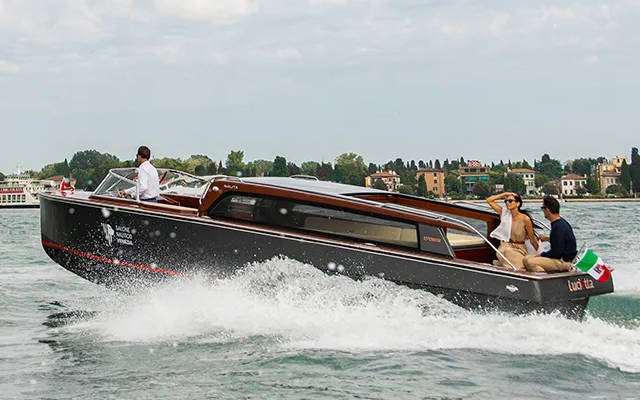 Venice's first fully electric water taxi, Lucietta, was unveiled by Swiss energy firm Repower. Designed by Nauta Design and built in Murano, Lucietta combines traditional Venetian styling with electric propulsion—powered by a 200 kW motor and 180 kWh battery system. It can cruise a full working day (7–20 km/h) on a single charge, emits no direct pollutants, and cuts energy use by around 60% compared to diesel boats.
Venice's first fully electric water taxi, Lucietta, was unveiled by Swiss energy firm Repower. Designed by Nauta Design and built in Murano, Lucietta combines traditional Venetian styling with electric propulsion—powered by a 200 kW motor and 180 kWh battery system. It can cruise a full working day (7–20 km/h) on a single charge, emits no direct pollutants, and cuts energy use by around 60% compared to diesel boats.ICCT Study Ends Debate: EVs Drastically Cleaner Than Gasoline Cars
04 Aug 2025 | Synopsis
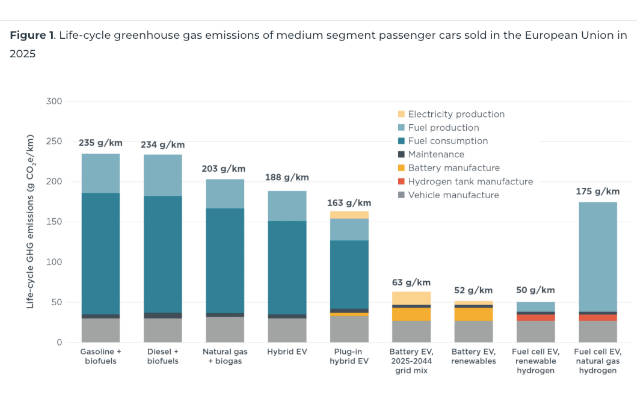 A definitive life-cycle study by the ICCT confirms EVs in Europe are drastically cleaner than gas cars. Even including battery manufacturing, an EV's lifetime emissions are 66-69% lower. The initial "carbon debt" from production is repaid within just 1-2 years of driving. This environmental advantage is set to grow significantly as electricity grids become cleaner, validating pro-EV policies.
A definitive life-cycle study by the ICCT confirms EVs in Europe are drastically cleaner than gas cars. Even including battery manufacturing, an EV's lifetime emissions are 66-69% lower. The initial "carbon debt" from production is repaid within just 1-2 years of driving. This environmental advantage is set to grow significantly as electricity grids become cleaner, validating pro-EV policies.
 Si Exclusive
Si Exclusive
Hydrogen's Flight Path: Fuel Cells, Turbines, and the Economics of Clean Aviation
10 Oct 2025 |  Aviation is shifting from Jet A to four fuel systems: electricity, hydrogen (fuel cell and combustion), SAF, and petroleum. Fuel cells suit short-haul aircraft; hydrogen combustion may power long-range jets. SAF bridges legacy fleets. Hydrogen costs - $5-$7/kg today, possibly $2/kg by 2040 - impact ticket prices and infrastructure decisions. Airport authorities, airlines, and governments will share deployment costs. Each fuel has distinct environmental pros and cons shaping aviation's net-zero future.
Aviation is shifting from Jet A to four fuel systems: electricity, hydrogen (fuel cell and combustion), SAF, and petroleum. Fuel cells suit short-haul aircraft; hydrogen combustion may power long-range jets. SAF bridges legacy fleets. Hydrogen costs - $5-$7/kg today, possibly $2/kg by 2040 - impact ticket prices and infrastructure decisions. Airport authorities, airlines, and governments will share deployment costs. Each fuel has distinct environmental pros and cons shaping aviation's net-zero future.
 11 Oct 2025 02:49:56 UTC |
RECENT PODCASTS
BYD Soars - Cheaper Tesla Models - The Bolt is Back - Rivian
SEARCH RSSTREAM
 48 New Postings In Past 24 Hours
48 New Postings In Past 24 Hours
Category:policy
Region:NoAmerica
Date:10 Oct 2025
Category:mobility
Region:NoAmerica
Date:10 Oct 2025
Category:autonomy
Region:NoAmerica
Date:10 Oct 2025
Category:mobility
Region:AsiaPacific
Date:10 Oct 2025
Category:finance
Region:NoAmerica
Date:10 Oct 2025
Category:policy
Region:NoAmerica
Date:10 Oct 2025
Category:mobility
Region:AsiaPacific
Date:10 Oct 2025
Category:mobility
Region:AsiaPacific
Date:10 Oct 2025
Category:finance
Region:NoAmerica
Date:10 Oct 2025
Category:finance
Region:IndoAsia
Date:10 Oct 2025